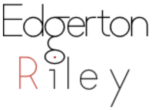tl;dr
For founders, UX is about optimsing the design and build process, to build the right thing for the right audience. Remember: it’s about how it works, not how it looks!
Introduction
Over the last few years I’ve spoken to a number of founders about UX, and how it can help. Even long-established businesses fall prey to the misunderstanding that UX is about how something looks, so I usually end up having a conversation where the key takeaway is some variant of the old adage:
Design is about how it works, not about how it looks.
Now this isn’t to say that the looks are unimportant or that a UX designer isn’t going to deliver something that’s visually attractive: the aesthetic-usability effect means that visually attractive designs are perceived as more intuitive than less attractive designs. But for founders, UX should be about optimising the process of design and build.
So you’re a bright-eyed founder, ready to build your dream and set the world ablaze with your brilliant idea. You’ve done some market research that’s told you that even outside your immediate family and friends, there are people willing to pay Real Cash Money for the idea! Why shouldn’t you jump right in and start developing?
User research
Market research at this early stage tells you if there’s merit in your idea: is it solving a real need? If it is, then you want to dig deeper to understand:
- Who is going to be using your product
- How you can design it around their needs
This is where user research comes in. You’ll have some idea about who will be using your product. User research will help you get a clearer picture of your users are so that you can:
- Design in a way that meets their needs
- Uncover additional needs they may have that could inform your product roadmap
- Prioritise features that matter most to your users so they get more value, more quickly.
Prototyping
Next, you can apply this understanding to your design, in the form of a prototype. Prototyping doesn’t offer all of the functionality of real software, but it means you can experiment with ideas in a way that is faster and cheaper than doing it in real code. You can also test your prototypes: get them in front of prospective users, see what works and what doesn’t. Once you’ve defined how the software should behave for the user, the designer will then work with your development team to create a spec that they can build from, leading to fewer code changes and reduced cost.
Summary
UX can be a complicated field: the number of job titles alone can make it a daunting prospect! But for a founder, the best advice is to focus on UX as a way of reducing the risk of going to market with the wrong product, designed for the wrong audience.
